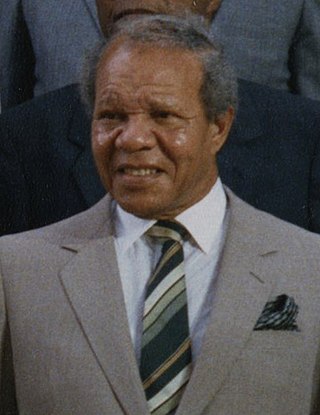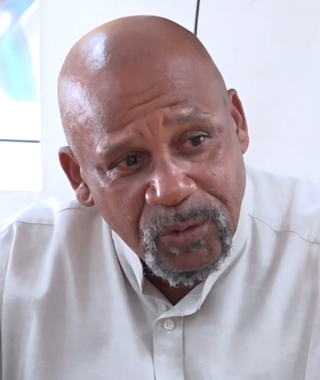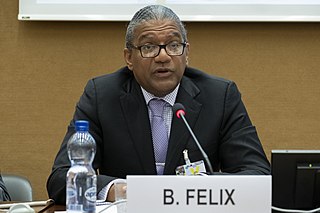
Saint Lucia is an island country of the West Indies in the eastern Caribbean. The island was previously called Iouanalao and later Hewanorra, names given by the native Arawaks and Caribs (respectively), two Amerindian peoples. Part of the Windward Islands of the Lesser Antilles, it is located north/northeast of the island of Saint Vincent, northwest of Barbados and south of Martinique. It covers a land area of 617 km2 with an estimated population of over 180,000 people as of 2018. The nation's capital and largest city is Castries.

Saint Lucia was inhabited by the Arawak and Kalinago Caribs before European contact in the early 16th century. It was colonized by the British and French in the 17th century and was the subject of several possession changes until 1814, when it was ceded to the British by France for the final time. In 1958, St. Lucia joined the short-lived semi-autonomous West Indies Federation. Saint Lucia was an associated state of the United Kingdom from 1967 to 1979 and then gained full independence on February 22, 1979.

Politics of Saint Lucia takes place in the framework of an independent parliamentary democratic constitutional monarchy, with King Charles III as its head of state, represented by a Governor General, who acts on the advice of the prime minister and the cabinet. The prime minister is the leader of the majority party of the house, and the cabinet conducts affairs of state. The Governor General exercises basically ceremonial functions, but residual powers, under the constitution, can be used at the governor general's discretion. The actual power in St. Lucia lies with the prime minister and the cabinet, usually representing the majority party in parliament.

Kenny Davis Anthony is a Saint Lucian politician who was Prime Minister of Saint Lucia from 1997 to 2006 and again from 2011 to 2016. As leader of the Saint Lucia Labour Party, he was Leader of the Opposition from 2006 to 2011 and returned to office as Prime Minister on 30 November 2011 following the 2011 election. He left office after the SLP's defeat in the 2016 election and announced his resignation as party leader.

Sir John George Melvin Compton, was a Saint Lucian politician who became the first Prime Minister upon independence in February 1979. Having led Saint Lucia under British rule from 1964 to 1979, Compton served as Prime Minister three times: briefly in 1979, again from 1982 to 1996, and from 2006 until his death in 2007. He cofounded the conservative United Workers Party (UWP) in 1964; he led the party until 1996, again from 1998 to 2000, and again from 2005 to 2007.
The Saint Lucia Labour Party (SLP) is a social democratic political party in Saint Lucia. It currently holds 13 of the 17 seats in the House of Assembly.

The island nation of Saint Lucia is divided into 10 districts. The name Quarters or Quartiers originally came from the French period in Saint Lucia. The 2001 and 2010 Census of Saint Lucia refers to the first level administrative divisions as districts. The FIPS and ISO standards regularly called these divisions quarters or quartiers in French. The former district of Dauphin Quarter was merged into Gros Islet District and the former district of Praslin Quarter was merged into Micoud District.

Sir (William) George Mallet GCSL GCMG CBE was a politician who was Governor-General of Saint Lucia and held a number of high offices in the island Saint Lucia, one of the Windward Islands of the Lesser Antilles in the Eastern Caribbean. Sir George served as the Minister for Trade, Industry, Agriculture and Tourism in the first post-independence government of St Lucia beginning in 1979. In later years, Sir George served as Deputy Prime Minister and was responsible for numerous government ministries including Foreign Affairs, Home Affairs and CARICOM Affairs.

Choiseul District is one of the 10 districts of the Caribbean island nation of Saint Lucia. Located on the southwestern side of the island, the district is home to 6,130 people, according to the 2019 census. The seat of Choiseul District is the town of Choiseul.
The Culture of Saint Lucia blends the influences of African, French, and English heritage. The official language of the island is English but kwéyèol(creole) and English creole, a form of French patois, remains an influential secondary language. The people are predominantly Catholic but the religious climate is tolerant.
Theophilus Ferguson John is a Saint Lucian politician. From 1997 until 2006 he was the parliamentary representative for Choiseul and Saltibus and the Minister for Physical Development, Environment and Housing of Saint Lucia. He is also the vice chairman of the Saint Lucia Labour Party.

General elections were held in Saint Lucia on 11 December 2006. The elections were fought between the Saint Lucia Labour Party (SLP) and the United Workers Party (UWP), which between them dominated politics in Saint Lucia. The results saw the governing Saint Lucia Labour Party lose the election to the United Workers Party led by John Compton, which gained eight seats to hold an eleven to six majority.

Peter Lenard "Spider" Montoute is a Saint Lucian politician and former Minister and parliamentary representative for Gros Islet for the United Workers Party (UWP). Montoute lost his seat in the 2021 Saint Lucian general election to Kenson Casimir; this was a landslide victory for the Saint Lucia Labour Party.

Ezechiel Joseph is a Saint Lucian politician and former representative for the constituency of Babonneau and senator, for the United Workers Party in the House of Assembly. Joseph served as the Minister of Agriculture, Fisheries, Physical Planning, Natural Resources and Co-operatives in his 2016 - 2021 tenure. Joseph lost his seat in the 2021 Saint Lucian General Election dubbed a landslide victory for the Saint Lucia Labour Party.
Saint Lucian cuisine is a combination of French, East Indian and British dishes. Before colonization, the Caribs and the Arawaks occupied the island, surviving on its various natural fruits and vegetables like mangoes, oranges, tangerines, avocados, and breadfruits.

Allen Michael Chastanet is a Saint Lucian businessman and politician who served as Prime Minister of Saint Lucia from 2016 to 2021. He is currently the Leader of the Opposition of Saint Lucia and the political leader of the United Workers Party as well as the parliamentary representative for Micoud South constituency.
Hunter J. François (CBE) was a Saint Lucian lawyer and politician.

General elections were held in Saint Lucia on 26 July 2021, having been constitutionally required by 12 October 2021. Voters elected all 17 members of the House of Assembly. The result was a victory for the opposition Saint Lucia Labour Party, which won 13 of the 17 seats in the House, while the ruling United Workers Party lost nine of its eleven seats, its worst result since 1997. It was the fourth consecutive election in which the incumbent government was defeated.

Bradley Felix is a Saint Lucian politician who was elected to represent Choiseul constituency in the House of Assembly in the 2021 general election. He is a member of the United Workers Party. He has served in the House of Assembly since 2016. Felix is now one of four opposition members in the House of Assembly after a landslide victory for the Saint Lucia Labour Party in the 2021 general election.

















